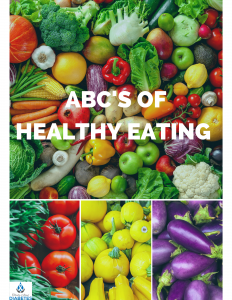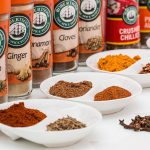Gone are the days of bland and boring food. There are healthy and good tasting alternatives available.

Highly processed foods are the enemies of healthy nutrition. Highly processed foods include packaged meals, most frozen meals and shelf-stable meals. Healthy alternatives are:
- Fresh or frozen vegetables. Frozen foods are picked and frozen at the peak of freshness but avoid those that contain sauces and additives. The ingredient list should only have the vegetables listed. Suggestions are
- String beans
- Brussel sprouts
- Broccoli
- Zucchini
- Yellow squash
- Cauliflower – try riced cauliflower as a replacement for rice
- Okra
- Limit use of canned foods – less nutritious, more processed and usually contains preservatives. The exceptions are:
- Beans – black beans, kidney or red beans, white beans, or chickpeas
- Tomatoes
- Fresh produce
- Salad – check date if buying bagged salads. Caution with salad kits because dressings are highly processed using unhealthy oils
- Try romaine lettuce, red leaf, butter lettuce or kale. More nutritious than iceburg.
- Spinach, cucumbers, carrots, celery, apples, pears are good additives
- Add chopped walnuts, pecans, pitaschios for added crunch and healthy fat.
- Starchy vegetables – limit to 1/2 cup serving size and eat at mid-day meal.
- Sweet potatoes – fresh ones are cheaper and more nutritious.
- Carrots – Avoid precut, they usually have additives to prolong shelf life. Whole carrots are generally affordable
- Hard shell squash – butternut, acorn, spaghetti
- Peas – field peas, limas, crowder, butter beans. Frozen are budget-friendly
- Beets – Fresh is generally more nutritious. Roasted beets are delicious.
- White potatoes – Baked, boiled, roasted are best
- Whole grains are better than processed grains
- Brown rice
- Barley
- Quinoa
- Millet
- Oats
- Seasonings – herbs and spices. These add flavor and helps to decrease salt use.
- Smoked paprika in place of smoked meat to flavor vegetables
- Rosemary
- Turmeric
- Ginger
- Roasted or smoked garlic powder – full of flavor
- Use mustard for seasoning and flavoring meat before grilling or roasting.
- Curry powder
- Garam marsala – it is strong and flavorful. You don’t need much
- Lemon pepper – but read the labels to check the salt content
- Adobo – check for salt before using
- Red pepper flakes – to add some heat
- Use chopped onion and bell pepper to flavor foods
- Try roasting vegetables in a 400-degree oven, use olive oil, salt, pepper, and garlic powder for seasoning.
- Protein at every meal including breakfast
- Fish and seafood at least twice a week
- Focus on cold-water fish and wild-caught seafood
- Avoid farm-raised if possible
- Eggs, turkey, chicken, ground beef are cost-effective
- Cheaper cuts of beef contain less fat. Great for slow cooker meals
- Avoid bottled salad dressings. Most contain unhealthy fats
- Avoid the use of canola oil, corn oil, vegetable oil
- Use olive oil for cooking, salad dressings, and healthy fats
- Alternative fats are avocado oil, coconut oil are better
Salad dressing – homemade is better. Use olive oil, vinegar (any flavor), a small amount of soy sauce, small amount of mustard. Place all ingredients in a jar and shake.
Other health tips-
- Increase water intake – the goal is 1/2 body weight in ounces
- Use leftover roasted vegetables in a salad with hard-boiled eggs


